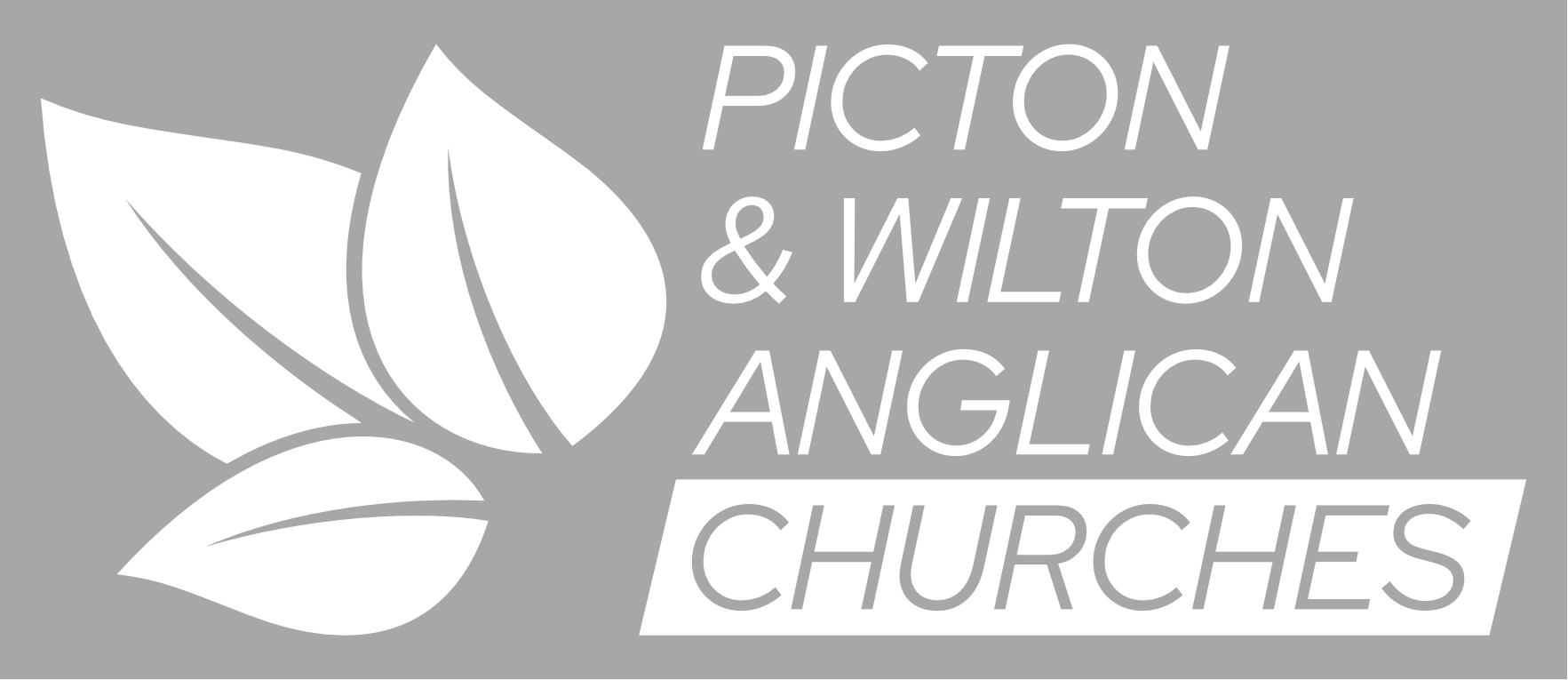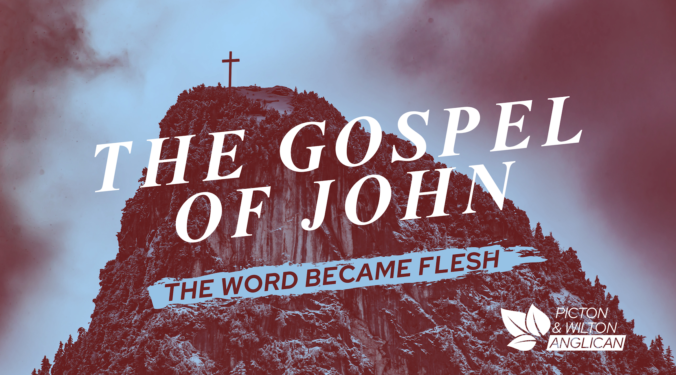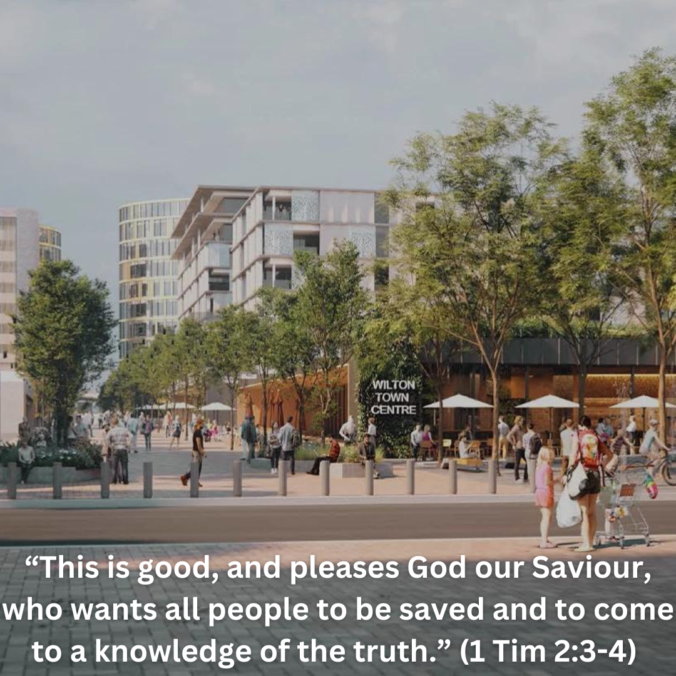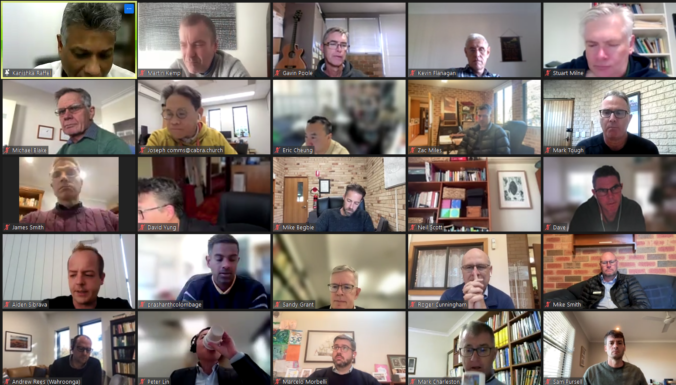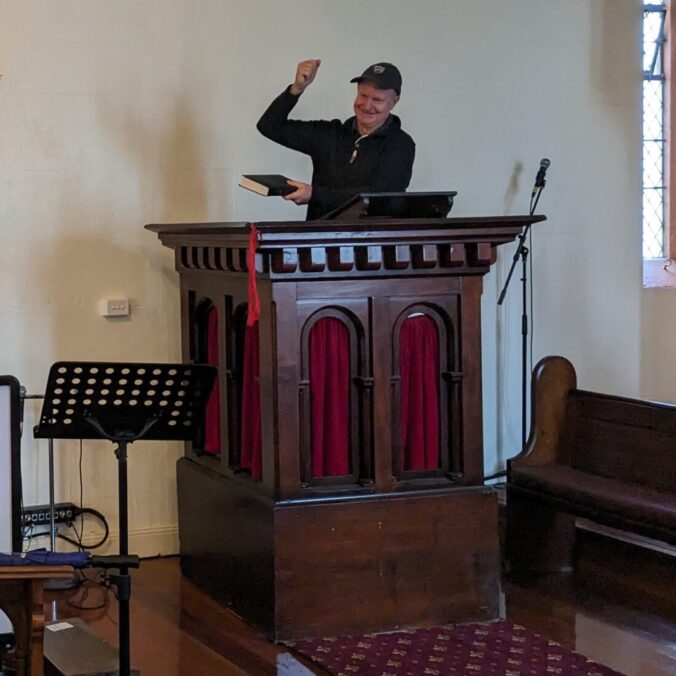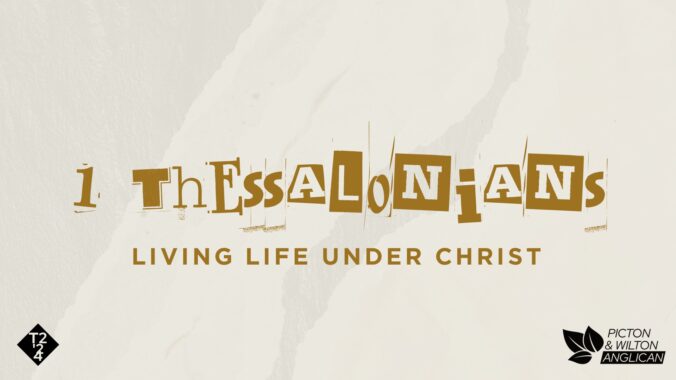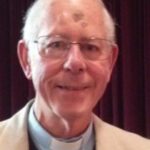I’m so proud of the way you serve among us with the gifts God has given you – for his glory and the building up of his Church!
I’m thinking particularly of the Holiday Lego Day Kids Club yesterday, and the Picton Community Pantry over the past few months. Both activities have seen a large team of volunteers at Church come together to serve our local communities and seek to share the good news of Christ!
The Picton Community Pantry has been a real blessing to shoppers and a place of growing connection and community. Join me in praying that it continues to run smoothly and that opportunities to support attendees with friendship, care and the gospel of Jesus Christ will arise.
It was wonderful to see the joyful faces of 64 kids at our Lego Day yesterday, hearing about the Kingdom of God – under King Jesus. A great team of leaders worked tirelessly, from sorting Lego in the weeks beforehand, to preparing 80 lunch packs, to running games, puppet shows, craft and activities along with teaching the kids about Jesus and his Kingdom. Join me in praying that the message of Jesus would resonate and that Kids and their families would be encouraged to receive Jesus as their King and become part of his Kingdom.
So, thankyou – and thank God for you. I pray your love for the Lord will continue to grow as you serve and love his people in the myriad ways that you do!
Yours in Christ,
Ben
Category: newsletter (Page 1 of 11)
God has spoken by his Word, and we are encouraged to read and meditate on it.
In Deuteronomy, Moses tells the Israelites that God’s commandments should be on their hearts, impressed upon their children, talked about when sitting at home and when walking along the road, tied as symbols on their hands and foreheads, written on the doorframes of their houses and more (Deuteronomy 6:4-9).
The Psalms begin with a declaration of blessing to the one whose delight is in the law of the LORD, and who meditates on his law day and night (Psalm 1:1-2). The longest chapter in the Bible is an extended meditation on the word of God: ‘How can a young person stay on the path of purity? By living according to your word.’ (Psalm 119:9).
When faced with temptation, Jesus reached for the word of God: ‘Man shall not live on bread alone, but on every word that comes from the mouth of God. (Matt 4:4).
So I want to urge you to read, meditate on and memorise God’s Word.
As we begin studying the gospel of John – I’m putting out the challenge (and the opportunity) for you to memorise John 1:1-14. Each week in Church there will be an opportunity for someone to recall these verses by memory in front of the congregation – and if they successfully do so, they’ll win a box of chocolates.
Yours in Christ,
Ben
Kate and I went to the movies yesterday on my day off to see ‘Unsung Hero’ – and it was brilliant. So encouraging to see a well produced Christian movie that deals with the reality of struggling with sin and pride and adversity and learning to pray and depend on God for everything.
It’s the true story of the Smallbone family – whose kids grow up to be famous Christian musicians ‘Rebecca St James’ and Joel and Luke Smallbone (‘For King and Country’). The family are actually Australian and there are some great Aussie culture moments and jokes. They move to America when the economic downturn of the 90’s makes it impossible for David (the Father) to find work in Australia.
My favourite moments in the movie were when one of the kids asks God to make things cheaper and seeing the Father figure humbled and forced to depend on God and others (in a healthy way).
I recommend you go and see the movie at the Theatre if you can, or when it comes out in other formats.
There’s a fuller review on the Sydney Anglicans website or in the May-June edition of the Southern Cross magazine from Church…
Yours in Christ,
Ben
“This is good, and pleases God our Saviour, who wants all people to be saved and to come to a knowledge of the truth.” (1 Tim 2:3-4)
Who doesn’t want all people to be saved and to come to a knowledge of the truth!?
By the time the suburban sprawl around us is winding down – we’ll be the local Anglican Church for over 50,000 people! If you too feel the weight of gospel and love for your neighbours, then let’s join together in our biggest challenge and in the adventure of our lives.
Let’s not shy away, comfortable in our own homes and church buildings, and quiet about our wonderful life in Christ. Let’s embrace the all-of-life mission that God has called us to. Let’s decide now, to strive together in God’s work to make the meaning of Christ’s death and resurrection known to all 50000 people.
So, what do you say? You in?
– Scott Williams (assistant minister)
In January a group of our teenagers and some of our youth leaders went away to the Leaders in Training Conference (LIT). They came back enthusiastic and equipped to serve at Church, to teach the Bible and to encourage others in their life in Christ.
One of the youth was so excited about a seminar on youth and kids ministry that she wanted everyone else at Church to experience it for themselves. So we’ve invited Amanda Grace, the children’s minister at Shellharbour Anglican to run her seminar at Wilton Anglican Church this Sunday afternoon (16th June). We’ll be having lunch together at 12:30pm, followed by the seminar 1-3pm.
Amanda is passionate about children’s ministry and will be running a very practical seminar with lots of tips and tricks to help us in our ministry to children and youth. It’s so important for us to be investing in the next generation of disciples of Jesus Christ and I’m super proud of the team of leaders running our Kids and Youth Ministry: from SRE teachers, to mid-week group leaders to our Kings Kids programme! It’s a big effort and I know many of you put in a lot of hard work preparing and leading each week – thankyou! I pray you see the fruits of your ministry in a new generation of disciples growing up to know and follow Jesus Christ as Lord!
Everyone is welcome to the training seminar, but you need to RSVP to Jake so we can cater for everybody.
Yours in Christ,
Ben
A Word of Thanks from Spiro at Compassion Australia:
“Thank you Picton/Wilton Anglican churches for your ongoing gospel partnership, bringing joy to the children, families and churches of Samar in the Philippines. Since last Sunday you sponsored another three boys and one girl who will be cared for and discipled by two of your partner churches. Almost 40 children are now sponsored by members of your three congregations. The day was also an encouragement to our volunteer speaker Michael, who enjoyed his time of fellowship and appreciated your warmth and generosity. After this experience, he has indicated his willingness to volunteer more often.
In coming months we hope to confirm a trip to Samar so that you will have an opportunity to visit your children and partner churches. Your church partnership coordinator Debbie Stein will keep you informed. Thanks to Debbie and Ben as well for their continued support for our partnership.
Another 6 profiles are in the hands of potential sponsors. Please don’t feel pressured, there is no obligation to sponsor these children, but do remember the QR code will work until June 23rd, and then each unsponsored child’s profile will be released to one of our other partner countries in order to find a sponsor.
God is good and Christ’s people are generous.
Your co-worker in Christ,
Spiro Cassis, Church Partnerships Manager, Compassion Australia.”
(Spiro came to visit us last year – see his smiling face below (with his wife)

I just spent an hour praying on Zoom with 70 or so other Senior Ministers from Anglican Churches around Sydney. Our Archbishop, Kanishka, encouraged us from Isaiah 55 in these glorious words from verse 1:
“Come, all you who are thirsty, come to the waters; and you who have no money, come, buy and eat! Come buy wine and milk without money and without cost.”
Prayer is so valuable because God is so powerful and he loves for us to call upon him, he loves to hear and answer our prayers. Prayer is also great because it allows me to take my cares and worries off my own shoulders and cast them before the LORD. Praying reminds me that I don’t have to micromanage and stress about every aspect of my life or yours – because ultimately, God is in control and he loves us.
Prayer can also realign me with God’s purposes. When I’m praying, it prompts me to align my life and my energy with God. It puts my trivial and foolish pursuits in perspective and helps me focus on what really matters.
So let me encourage you to pray right now – bring to God the concerns and troubles of your day – give thanks for the joys and blessings and ask him for help to live his way.
Our God is gracious and kind – he loves to feed us and fill us with the life-giving water of his Son, Jesus Christ, without cost and even when we don’t deserve it.
Yours in Christ,
Ben
This week we say farewell to the pulpit of St Mark’s – as we gift it to the Oaks Historical Society.
Many a sermon was preached from its heights, many a member has looked up in reverence as they heard God’s Word proclaimed.
The sermons will continue to be preached, and the Word of God will continue to be revered, but the pulpit has had its day and the modern preacher doesn’t want to be elevated. It’s more than a decade since the pulpit was used – and we need the space.
There have been some marvellous and some funny moments in the pulpit of St Mark’s. From the galloping parson, Thomas Hassall, who rode his horse over Razorback to preach in the mid 1800’s, to students of Picton High School who travelled in the bus to have their Scripture lessons at St Mark’s.
At one point a button was wired into the pulpit to switch on a light by the organ console to alert the deaf organist that it was time to start the next hymn. Unfortunately one very enthusiastic guest preacher thumped the pulpit so hard that they triggered the light and the organist started playing the hymn in the middle of his sermon. He had no choice but to lead the congregation in singing the hymn, before returning to his message afterwards.
In a world of constant change, we need something to hold onto. Don’t hold onto pulpits, hold onto Jesus. The unchanging and glorious good news of Jesus Christ is our certain hope and joy in life and in eternity.
This Sunday, Scott will preach his sermon from the pulpit as a last hurrah.
Yours in Christ,
Ben
Paul and his companions experienced violence and persecution in Thessalonica when they first preached the gospel there. In fact, they had to escape at night from a rioting mob, opposed to their teaching that Jesus is the Messiah (Acts 17). In a week where Sydney has experienced at least three incidents of gross violence, you might feel anxious or uncertain about our society.
But in the midst of severe suffering the Thessalonians were filled with joy in the gospel. The message of the gospel rang out from them as news spread of how their lives had been transformed. We serve the living and true God – and we are awaiting the return of his Son, our Lord Jesus Christ. This fills us with hope and comfort, and enables us to live with joy, hope and faith in our Saviour Christ.
The gospel is powerful to transform our lives, and when it does, people notice.
Imagine if people said of our Church: they ‘turned to God from idols to serve the living and true God, and to wait for his Son from heaven, whom he rescued from the dead – Jesus, who rescues us from the coming wrath.’ (1 Thess 1:9-10).
Imagine if the gospel transformed our lives in such a way that people around noticed and were drawn to find out about this transforming power for themselves.
Yours in Christ,
Ben
Last week Kate and I spent some time in Western Australia to celebrate our 20 year wedding anniversary! It was wonderful to celebrate, to enjoy some time just the two of us, and to explore a part of Australia neither of us had ever visited before.
Marriage isn’t easy – and it doesn’t always work out how we’d hoped – but it is important. If you’re married, it’s important to you, its important to your broader family and friends and to our entire community. Marriage provides stability and a natural support network for everyone within or around its web. But marriage isn’t everything. Marriage is reflective of the relationship between Christ and his Church and it is in every case, only a pale and poor reflection of the love of Christ.
If you are married, I believe you should invest in having a healthy and strong marriage relationship. If you aren’t married, you should invest in healthy friendships and making the most of the freedoms you have in singleness. All of us need connection and friendship, not all of us need to be married. All of us should strive to be content* in the situation God has put us in and to serve and love others in the family of God and the community in which we’ve been placed.
If you’re married, one way you could invest in your marriage is by participating in an upcoming marriage enrichment course – limited to 15 couples – Monday nights starting 29th April (https://pwac.org.au/building-a-safe-and-strong-marriage/).
Yours in Christ,
Ben
*Some situations are not safe and we should escape them, don’t strive for contentment in an unsafe relationship.
